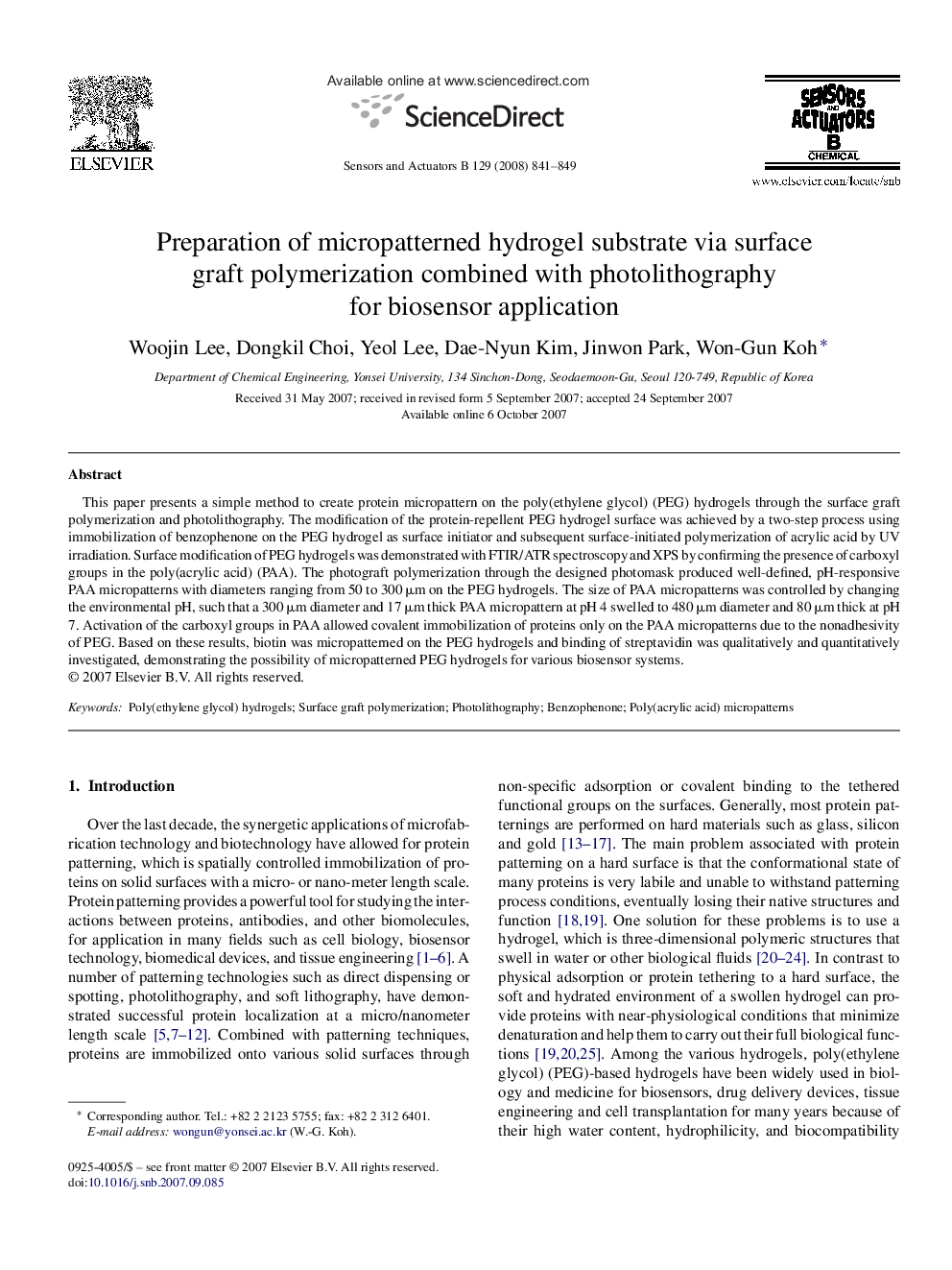| Article ID | Journal | Published Year | Pages | File Type |
|---|---|---|---|---|
| 746685 | Sensors and Actuators B: Chemical | 2008 | 9 Pages |
This paper presents a simple method to create protein micropattern on the poly(ethylene glycol) (PEG) hydrogels through the surface graft polymerization and photolithography. The modification of the protein-repellent PEG hydrogel surface was achieved by a two-step process using immobilization of benzophenone on the PEG hydrogel as surface initiator and subsequent surface-initiated polymerization of acrylic acid by UV irradiation. Surface modification of PEG hydrogels was demonstrated with FTIR/ATR spectroscopy and XPS by confirming the presence of carboxyl groups in the poly(acrylic acid) (PAA). The photograft polymerization through the designed photomask produced well-defined, pH-responsive PAA micropatterns with diameters ranging from 50 to 300 μm on the PEG hydrogels. The size of PAA micropatterns was controlled by changing the environmental pH, such that a 300 μm diameter and 17 μm thick PAA micropattern at pH 4 swelled to 480 μm diameter and 80 μm thick at pH 7. Activation of the carboxyl groups in PAA allowed covalent immobilization of proteins only on the PAA micropatterns due to the nonadhesivity of PEG. Based on these results, biotin was micropatterned on the PEG hydrogels and binding of streptavidin was qualitatively and quantitatively investigated, demonstrating the possibility of micropatterned PEG hydrogels for various biosensor systems.
